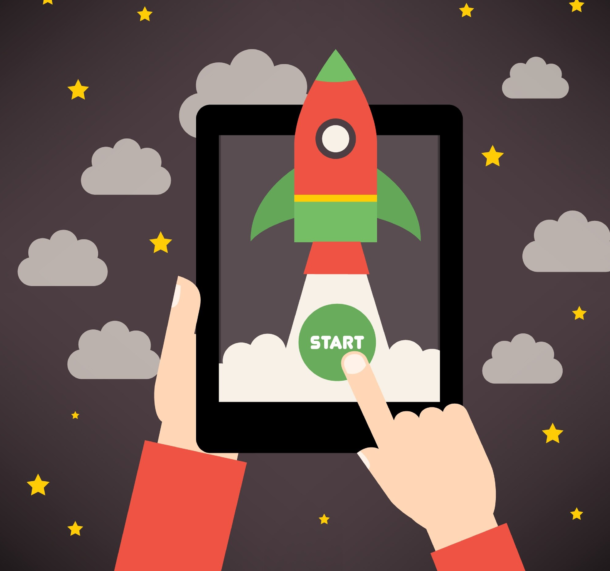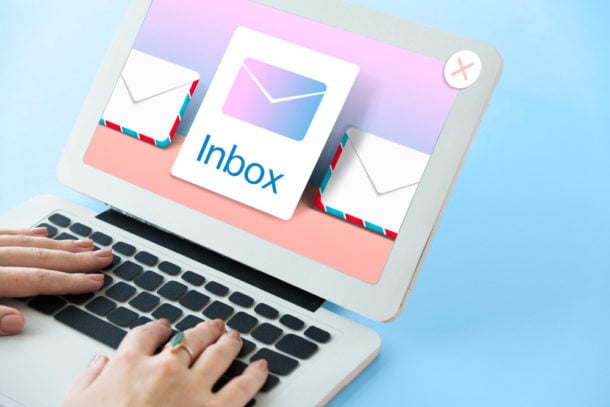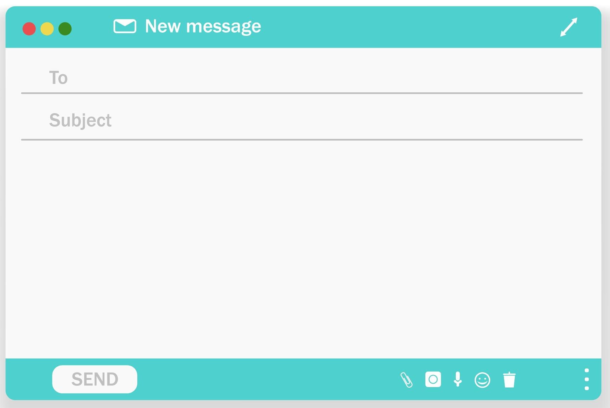The first impression of your ebook offer arrives in your reader’s inbox, competing with dozens of other emails for attention. This critical moment – when your subject line either captures interest or gets ignored – determines the success of your entire ebook launch.
Most authors pour hours into perfecting their ebook content but give little thought to these 50-60 characters. This oversight costs them dearly. Recent email marketing data reveals that 47% of recipients decide to open emails based solely on the subject line. For ebook offers, this percentage jumps even higher to 54%.
Think about your own inbox behavior. You scan quickly, making split-second decisions about which emails deserve your attention. Your potential readers do exactly the same thing. They need to know immediately what value your ebook offers them.
Three elements determine whether your subject line succeeds:
- Attention-Grabbing Power
- Clear Value Promise
- Urgency Without Desperation
Let’s examine how these elements work together.
The attention-grabbing power of your subject line stems from its specificity. Generic phrases like “New Ebook Available” fail because they don’t signal unique value.
Instead, successful subject lines include concrete details about the benefits inside.
“Social Media Templates: 50+ Ready-to-Use Posts ($97 Value)” tells readers exactly what they’ll get.
Your value promise must address a specific pain point or desire. Readers want to know how your ebook will improve their lives or solve their problems. The most effective subject lines connect directly to reader goals.
A subject line reading “Double Your Website Traffic: SEO Guide + Analytics Templates” speaks directly to a common marketing challenge.
Urgency drives action, but manufactured pressure backfires. False scarcity damages trust. Real urgency comes from genuine limitations – limited-time bonuses, early-bird pricing, or truly limited quantities. When you state “48 Hours Left: Marketing Guide + 3 Bonus Templates,” make sure you honor that deadline.

Common Mistakes That Kill Opens
Most ebook creators sabotage their success before readers even see their offer. Understanding these mistakes helps you avoid the common traps that sink sales.
False Promises destroy trust
Many writers think big claims attract attention. They do – but they also destroy credibility when readers find out you can’t deliver. If your subject line reads “Make $10,000 this month,” your ebook needs to provide a clear, proven path to that exact result. Instead, focus on real value you actually deliver. “SEO Strategy: How I Ranked 10 Websites” works better than vague promises.
Vague subject lines waste opportunities
New ebook creators often default to generic lines like “New Guide Available” or “Marketing Ebook Inside.” These tell readers nothing about value or benefits.
Your subject line must answer the reader’s first question: “What’s in it for me?”
Replace vague phrases with specific benefits. “SEO Guide: Rank Higher in 30 Days” tells readers exactly what they’ll learn and what to expect.
Spam trigger words send you straight to junk mail
Email filters grow smarter every day. They catch obvious spam words and often mark your email as junk before readers ever see it. Common triggers include:
- “Free” (use “no cost” instead)
- “Act now” (use “today” instead)
- “Limited time” (use “ends tomorrow” instead)
- “Once in a lifetime” (avoid completely)
- “Guaranteed” (show proof instead)
Over-excitement signals desperation
Multiple exclamation points, ALL CAPS, or too many emojis make your offer look unprofessional. Professional marketers know one exclamation point is plenty. Let your offer’s value excite readers, not your punctuation.
Poor timing ruins good offers
Sending your ebook announcement at 3 AM or on major holidays guarantees low open rates. Study your audience’s habits. Business readers open emails Tuesday through Thursday mornings. Parents might read email late evening after kids sleep. Match your timing to your readers’ lives.
How to Plan Your Launch Sequence

Blasting random emails kills your ebook sales. You need a strategic sequence that builds trust and interest. Most creators fail because they don’t understand how launch sequences actually work.
Creating Your Pre-Launch Strategy
Think about Amazon’s pre-launch strategy. They don’t suddenly announce new products. They build anticipation. Create curiosity. Share sneak peeks. Your ebook launch needs this same careful preparation.
Start 14 days before launch. Here’s why:
- Gives readers time to anticipate your solution
- Builds natural interest without pressure
- Creates multiple touchpoints for trust
- Allows you to showcase expertise gradually
Your First Email: Problem Recognition Subject line: “Are Facebook ads eating your budget?”
This works because it:
- Names their exact pain point
- Shows you understand their struggle
- Opens a conversation naturally
But here’s what makes it powerful – follow up with actual value. Share one quick tip they can use immediately. This proves you know your stuff.
Example:
“Here’s a 5-minute fix for expensive Facebook ads: Change your ad scheduling to exclude 3 AM – 5 AM clicks. Most clicks during these hours come from bots or wrong audiences. One client saved $247 last month just from this change.”
This builds trust because:
- Offers immediate value
- Shows real results
- Proves your expertise
- Makes a future purchase logical
Your Second Email: Deepening the Connection Subject line: “What’s really killing your ad results?”
Don’t just send it. Time it right:
- Wait 48 hours after first email
- Send during business hours
- Avoid Mondays and Fridays
- Consider your audience’s time zone
The email should:
- Address a second problem related to your first
- Offer another actionable tip
- Hint at your complete solution
- Build curiosity about your ebook
The Launch Day Strategy: More Than Just “Buy My Ebook”

Most launches fail on day one. Why? Because creators jump straight to selling without understanding launch day psychology. Let’s fix that.
Your Launch Morning: Setting The Stage
Think about successful product launches – Apple, Tesla, Nike. They don’t just announce a product. They create an event. Your ebook launch needs this same energy.
Morning Subject Line: “The Facebook Ads Guide is here (Special Launch Price)”
Why this works:
- Clear announcement
- Implies scarcity through “launch price”
- No hype or false promises
- Creates natural urgency
But here’s the critical part – your email content must deliver on this promise. Structure it like this:
Opening: Remind them of their problem
“Remember those expensive Facebook ads eating your budget?”
Middle: Present your solution
- What specifically is in the guide
- How it solves their problem
- Why you created it
- Who it’s perfect for
Example:
“Inside this guide, you’ll find:
- 6 proven ad templates (tested on $50,000+ ad spend)
- My exact targeting strategy ($2 leads vs. industry average $11)
- ROI calculator spreadsheet (know your numbers before spending)
- 30-day optimization plan (step-by-step fixes)”
Close: Clear action steps
- Special launch price (show regular price comparison)
- Any bonuses (must be relevant to main offer)
- How long the offer lasts
- Exactly how to buy
Your Afternoon Follow-Up: Common Mistakes Fixed
Most creators send the same message again. Wrong. Your afternoon email needs new value.
Subject Line: “Questions about the Facebook Ads Guide (+ Examples)”
This email should:
- Answer actual questions you’ve received
- Share a case study or example
- Address common objections
- Add new proof points
Example Structure:
“Three questions I keep getting about the guide:
- ‘Will this work for small budgets?’
Here’s how Jane used these templates with just $10/day… - ‘I’m new to Facebook ads. Is this too advanced?’
Let me show you how complete beginners use the step-by-step system… - ‘What makes this different from other guides?’
Compare these results from two different approaches…”
Evening Strategy: Last Chance Psychology
Your final day-one email needs perfect timing. Here’s why:
Subject Line: “Final hours: Facebook Ads Guide (Launch Price)”
Timing matters:
- Send 2-3 hours before deadline
- Allow time for action
- Consider work schedules
- Account for time zones
Content must include:
- Quick summary of value
- What they’ll miss
- Actual deadline
- Clear buy button
Post-Launch Strategy: Where Real Sales Happen

Most creators think launch day determines success. Wrong. The days after launch often bring more sales – if you know how to follow up properly.
Day After Launch: Building on Momentum
Many readers wanted to buy but didn’t. Common reasons:
- Needed to check finances
- Wanted to research more
- Got busy with work
- Forgot to come back
Your solution? Strategic follow-up.
Subject Line: “About yesterday’s Facebook Ads Guide…”
Here’s what makes this email powerful:
- Acknowledges their interest
- Provides new proof
- Addresses missed opportunity
- Offers second chance
Example Structure:
“Yesterday we launched the Facebook Ads Guide, and something interesting happened…
Three success stories rolled in:
- Sarah cut her ad costs by 47% using just chapter 2
- Mike landed 13 leads his first day with template #4
- John finally broke even on his ads using the ROI calculator
But I also got messages from people who missed out because:
- They were in meetings all day
- Had to check with their business partner
- Wanted to see more results first
So here’s what I’m doing…”
Then offer a 24-hour extension – but with a twist:
- Add a new bonus (must be valuable)
- Show why you’re extending
- Set firm deadline
- Include social proof
Day Two Strategy: The Case Study Email
Now you shift focus from features to results.
Subject Line: “They fixed their Facebook ads (see how)”
Why this works:
- Shows rather than tells
- Proves your method works
- Makes success feel achievable
- Removes buying risk
Case Study Structure:
- Start with the problem
“Meet Tom. His Facebook ads were costing $15 per lead…” - Show the journey
“Using the guide’s chapter 3 strategy, he first…” - Reveal results
“After 7 days, his cost per lead dropped to $4.50…” - Break down the process
“Here’s exactly what he did:
- Changed targeting using page 45 method
- Applied the CTR fix from chapter 2
- Used template #3 for his ad copy”
- Connect to reader’s situation
“If you’re facing similar high costs…”
Day Three: The FAQ Breakthrough
By now, you know what stops people from buying. Use this knowledge.
Subject Line: “Your Facebook Ads questions answered”
This email must:
- Address real concerns
“The #1 question I keep getting…” - Show more proof
“Another success story came in…” - Handle objections
“Some worry this is too advanced…” - Add urgency naturally
“The launch price ends tomorrow because…”
Final Launch Sequence: Closing With Purpose

Most launches end weakly. “Last chance” emails don’t work anymore. Here’s how to close strong while maintaining trust and driving action.
Day Four: The Results Roundup
Change the conversation from “buy now” to “look what’s happening.”
Subject Line: “Facebook ad results are pouring in”
Why This Timing Works:
- Shows your guide delivers results
- Creates natural FOMO
- Builds buying confidence
- Makes deadline feel real
Email Structure:
“Quick update about the Facebook Ads Guide results:
In just 3 days:
- 17 users cut their ad costs by 40% or more
- 31 people landed their first profitable campaign
- 8 broke their lead generation records
Let me show you exactly how they did it…”
Then break down one specific success story:
- Starting situation (make it relatable)
- First steps they took
- Challenges they overcame
- Specific results with numbers
- Timeline to success
Example:
“Take Maria’s story…
She started with a $50/day budget that was getting zero sales. Her first step using the guide was implementing the ‘Audience Triangle’ method from Chapter 1. Within 48 hours…”
Day Five: The Strategy Shift
Stop selling. Start showing what they’ll miss.
Subject Line: “Before the Facebook Ads Guide closes…”
Content Strategy:
- Share a complete strategy they can use
“Here’s one of the 12 targeting methods from the guide…” - Show its impact
“When Steve used just this one method…” - Reveal what else they get
“This is just one of 47 strategies inside…” - Connect to deadline
“The complete guide (and bonuses) are available until…”
The Final Day: Closing Strong
Your last two emails matter most. Here’s how to do them right.
Morning Email:
Subject Line: “Last day: Facebook Ads Guide closes tonight”
Structure it differently:
- Start with deadline
“The Facebook Ads Guide closes at midnight because…” - Summarize total value
“Inside you’ll find:
- 12 targeting strategies ($997 value)
- 47 proven ad templates ($1,997 value)
- ROI calculator ($297 value)
- 30-day optimization plan ($497 value)
Total value: $3,788
Your investment: Just $297″
- Share final case study
“Yesterday, Mark implemented one template…” - Clear buying steps
“Here’s how to get started: - Click the button below
- Choose your package
- Get instant access”
Final Email (3 Hours Before Close):
Subject Line: “Final call: Facebook Ads Guide (3 hours left)”
Make it count:
- Absolute clarity on deadline
“Closing tonight at midnight EST” - Quick value reminder
“Remember: You get…” - Fast-action bonus
“Next 10 buyers also get…” - Future price warning
“Price increases to $497 after launch”
Post-Close Strategy:
This is crucial – stick to your deadline. Build trust by:
- Actually closing cart
- Removing buy buttons
- Changing sales page
- Honoring your word
When someone tries to buy late:
- Thank them for interest
- Confirm cart is closed
- Offer waiting list spot
- Never break your deadline
This builds credibility for:
- Future launches
- Higher price points
- More trust
- Better reputation
Making This Work For Your Ebook Launch
You now have the complete strategy for writing subject lines that sell your ebook:
- A proven 7-day launch sequence
- Exact timing for each email
- Real examples that work
- Psychology behind why they work
Your Next Step: Take your biggest reader problem and write your first subject line. Use the strategies from our launch sequence. Test it against the examples we covered.
Your subject lines exist for one purpose – connecting readers who need help with your solution that can help them. Keep this focus, and you’ll write subject lines that actually work.
